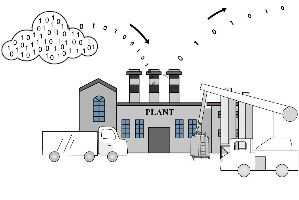How can food and beverage companies use digitalization to dramatically increase flexibility, enhance consumer responsiveness, and improve productivity? This episode of Tech-Clarity TV, Revolutionizing Food and Beverage Production with the Industrial IoT and the Digital Twin, shares how food producers can leverage digital twins and the IoT to improve performance.
Transcript
The food and beverage industry is facing major disruption
New competitors are adopting digital technologies and taking on the largest of companies, competing with unprecedented innovation and agility.
Consumers are demanding more.
To rise to the challenge, food and beverage plants need to increase flexibility while maintaining high productivity and compliance to ensure consumer confidence.
The digital revolution has begun.
Food companies have to leverage digital tools including the Internet of Things, the Digital Twin, the Cloud and Analytics to drive agility and consumer responsiveness.
Using the IoT, digital food and beverage companies tap into data from a variety of sources and use analytics to gain deep consumer insights.
Then, they quickly reformulate digital recipes to respond to trends.
They leverage plant automation to capitalize on changing preferences.
Digitalization allows food and beverage companies to get products that consumers want to market faster than the competition.
But leading companies go beyond just internal agility and responsiveness.
They use the IoT to gain advanced insights to optimize recipes and production schedules.
The digital plant acts as one with their supply chain to rapidly adjust to changing supply and demand.
Digital food and beverage companies also turn to digitalization to drive higher productivity.
They reduce downtime by monitoring equipment health and servicing equipment before it fails using the Industrial IoT and predictive maintenance.
They improve yields by identifying and correcting production issues in real-time.
They use the IoT and analytics to benchmark performance to identity improvement opportunities.
They use the digital twin of their plant to simulate and validate the impact of changing equipment.
They quickly deploy new recipes, packaging and equipment using virtual commissioning.
Finally, they identify opportunities to more accurately simulate production based on IoT data and a closed loop digital twin to better reflect reality and improve optimization using real-world information.
Digitalization helps food and beverage companies improve throughput, increase uptime, decrease cost, improve quality and support high levels of traceability and compliance.
It enables companies to raise the bar on innovation and agility without compromising productivity, cost or quality.
The time has come for food and beverage plants to digitalize in order to survive in the digital age.
To learn how, watch the rest of our video series on digitalization in the food & beverage industry. And learn more from our sponsor, Siemens PLM, a leader in digitalization for the food & beverage industry.

